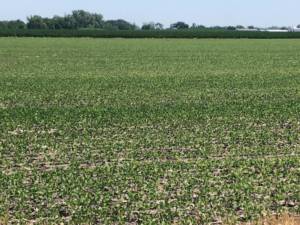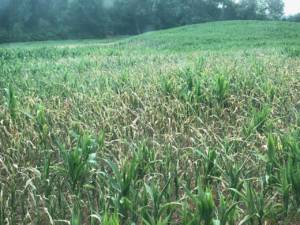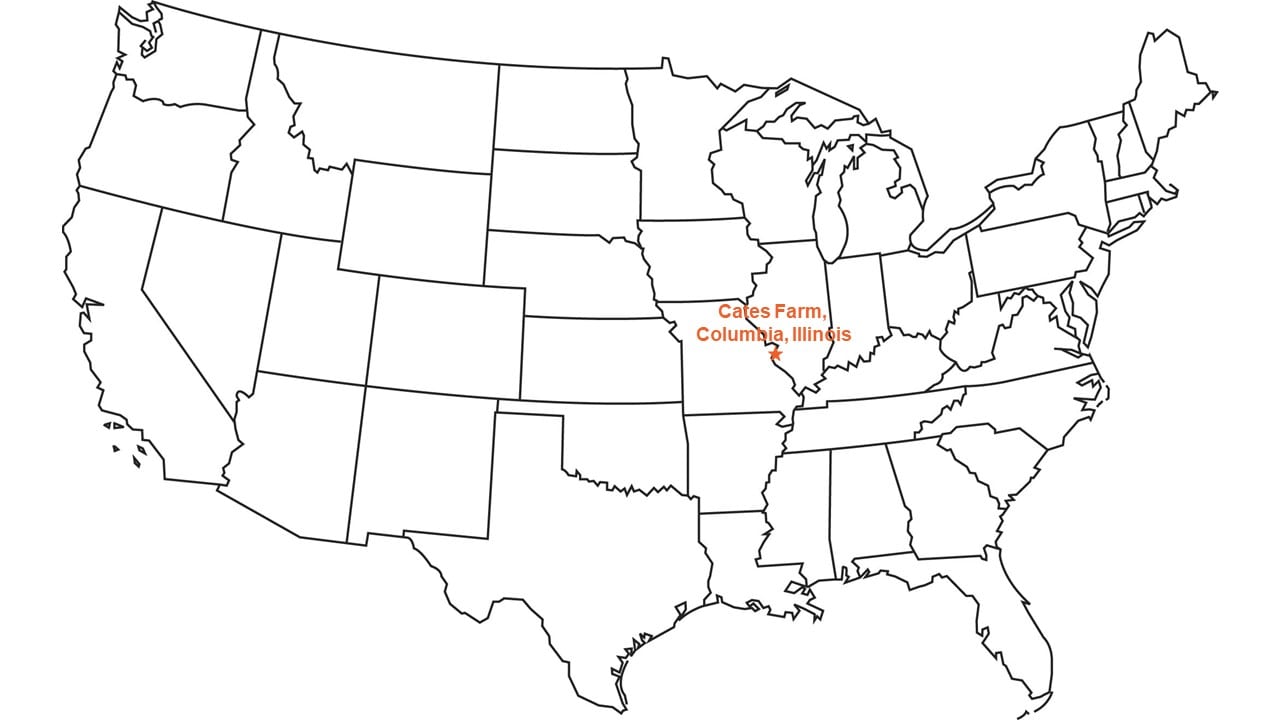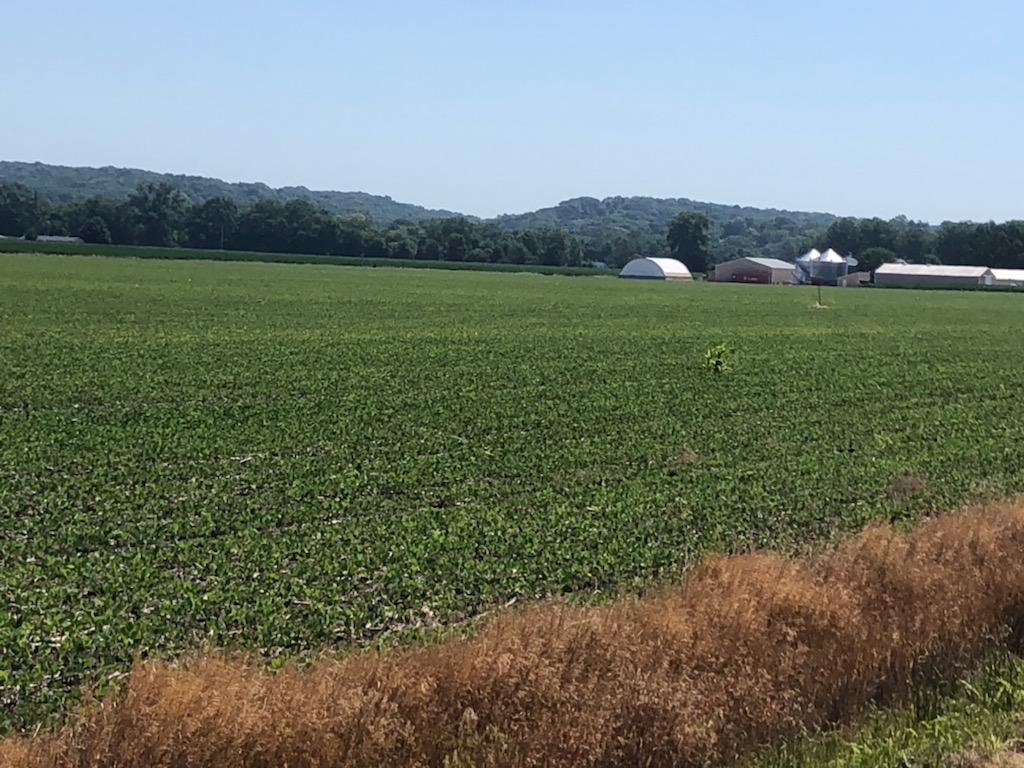 After rain delays through much of May, I finished planting soybeans on June 5. I am still amazed at how quickly we can get caught up on fieldwork when the weather changes. Big equipment allowed my hired man and I to plant soybeans in about a week.
After rain delays through much of May, I finished planting soybeans on June 5. I am still amazed at how quickly we can get caught up on fieldwork when the weather changes. Big equipment allowed my hired man and I to plant soybeans in about a week.
I expected to have to replant some soybeans. Several low-lying fields had spots that turned into ponds after we got 4.3 cm, or 1.7 inches, of rain in just one hour. That storm was followed by a few days of unseasonably cold temperatures. The fields were already planted, and I checked those spots frequently. I was very glad to see that eventually all those soybeans emerged well. This is the first time in at least 5 years that I have not had to replant any soybeans or corn.
Since that heavy rain, the weather has changed from cool and wet to hot and dry. Daily high temperatures have been above 32°C, or 90°F, and we have had several days with winds of about 32 km per hour, or 20 miles per hour. This weather has changed soil and crop conditions dramatically and impacted how we manage the next stage of field work – controlling problem weeds like waterhemp, giant ragweed and even a bit of Palmer amaranth.
 After the soybeans were planted, we made a second application of nitrogen to the emerged corn. Then we applied a post-emergence herbicide to the corn, but we had to be intentional about waiting until winds died down to apply the herbicide. The corn now needs rain, especially in fields that have sandy soils. In some spots, the corn is starting to show signs of drought stress, with leaves curling and starting to turn brown.
After the soybeans were planted, we made a second application of nitrogen to the emerged corn. Then we applied a post-emergence herbicide to the corn, but we had to be intentional about waiting until winds died down to apply the herbicide. The corn now needs rain, especially in fields that have sandy soils. In some spots, the corn is starting to show signs of drought stress, with leaves curling and starting to turn brown.
We are now applying a post-emergence herbicide to the soybeans when the weather allows. The soybeans are not showing any signs of suffering from drought stress yet. But, the change in weather has made herbicide timing tricky. Typically, the residual pre-emergence herbicide applied at planting will last for a few weeks, and then we apply herbicide to control the weeds that emerge after the soybeans. That second herbicide application will keep weeds out until the soybeans grow big enough to canopy and shade between the rows.
In the current hot, dry conditions, weeds are not germinating, but the soybeans are also growing slowly. It is taking longer than average for the soybeans to canopy over my 38-cm, or 15-inch, rows. I like to apply the herbicide when weeds are small, but if we do get the rain we need, both the soybeans and the weeds could grow quickly while conditions keep us out of the field. For example, I keep an eye on tropical depressions in the Gulf of Mexico that could push rain up into my area.
I’ve decided that about now is a good time to limit those risks and get the best weed control possible. When temperatures or winds are high, we do wait to apply the herbicide. It’s better for both the weeds and the crop to be actively growing for herbicides to be effective. Calm weather allows the herbicide to land where we direct it with our sprayer.
Fortunately, the winter wheat looks like we could have the best crop we’ve had in 10 years. I expect it to be ready to harvest by the last week of June. As soon as it is harvested, we will plant double-crop soybeans into the wheat stubble.
The dry weather is becoming a concern beyond just the crops.
The Mississippi River level is dropping. I monitor the river level for flood stage and the water level in low-lying areas that often hold seepage. The numbers I see are the depth of the Mississippi River above the minimum navigation depth. Currently, it is at just more than 2.7 meters, or 9 feet, but the forecast predicts that by the last week of June, the river will be just .6 meters, or 2 feet, above the minimum needed for navigation.
When the river levels drop to negative numbers, like they did during our drought in 2012, that means its depth is less than the minimum needed for navigation. In those cases, barges are only partially filled, so they don’t drag. Hopefully we won’t reach those levels this year, but I am paying attention.
The low Mississippi River level means that the areas that hold seepage waters, referred to as sloughs, have dried up. Old-timers who farmed this area longer than my family have said that when the sloughs are dry, we are more likely to have poor crops. I’ve actually planted corn and soybeans in areas that usually can’t be planted in an effort to spread out risk. These areas are most likely to retain moisture longer.
The tough spring looks like it is being followed by a challenging summer. And that will make for an interesting year.

